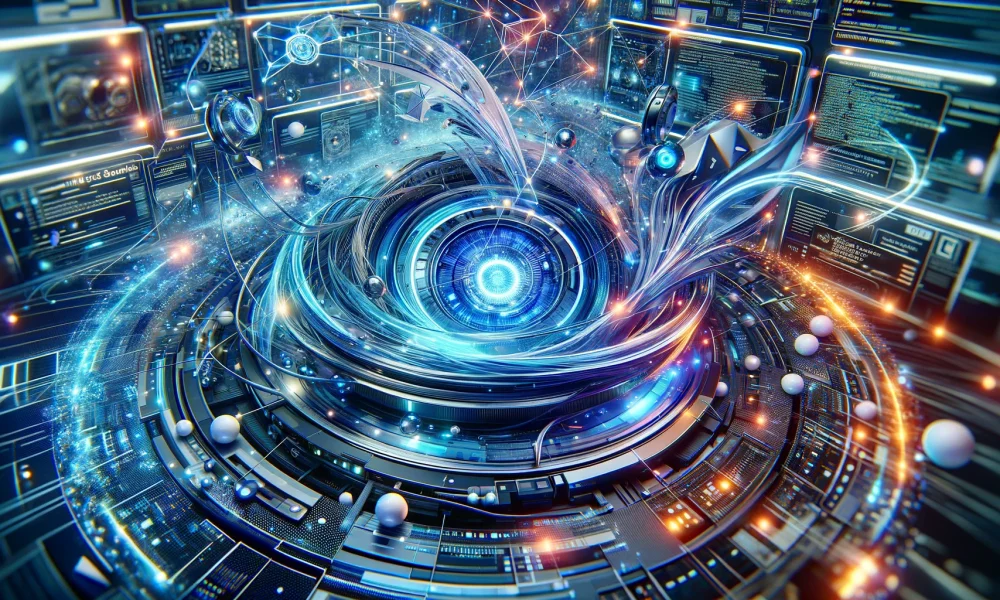Unlocking the Power of Open AI Models: A Paradigm Shift in Technology
In a world where Artificial Intelligence (AI) reigns supreme, key players like Nvidia, Alibaba, and Stability AI are pioneering a transformative era. By democratizing AI through open models, these companies are reshaping industries, fostering innovation, and propelling global advancements.
The Evolution of AI: Breaking Down Barriers
Traditionally, AI development has been restricted to tech giants and elite institutions due to significant resource requirements. However, open AI models are revolutionizing the landscape, making advanced tools accessible to a wider audience and accelerating progress.
Transparency and Trust: The Cornerstones of Open AI Models
Open AI models offer unparalleled transparency, enabling scrutiny of development processes, training data, and algorithms. This transparency fosters collaboration, accountability, and leads to the creation of more robust and ethical AI systems.
The Impact of Open AI Models: Across Industries and Borders
From finance to manufacturing and retail, open AI models are revolutionizing various sectors. They enhance fraud detection, optimize trading strategies, personalize shopping experiences, and drive efficiency in production. By providing open access to cutting-edge AI models, companies like Nvidia, Alibaba, and Stability AI are empowering businesses and researchers worldwide.
Nvidia’s Nemotron-4 340B: Revolutionizing AI Innovation
Nvidia’s Nemotron-4 340B family of language models sets a new standard in AI capabilities. With 340 billion parameters and pre-training on a vast dataset, these models excel in handling complex language tasks, offering unmatched efficiency and accuracy.
Alibaba’s Qwen Series: Advancing Versatility and Efficiency in AI
Alibaba’s Qwen series, including the Qwen-1.8B and Qwen-72B models, are designed for versatility and efficiency. With innovative quantization techniques and high performance across benchmarks, these models cater to diverse applications from natural language processing to coding.
Stability AI’s Groundbreaking Generative Models: A Leap in Creative AI
Stability AI’s Stable Diffusion 3 and Stable Video Diffusion models are at the forefront of generative AI. From text-to-image generation to video synthesis, these models empower creators across industries to produce high-quality content efficiently.
Democratizing AI: A Collective Commitment to Innovation
Nvidia, Alibaba, and Stability AI share a commitment to transparency, collaboration, and responsible AI practices. By making their models publicly accessible, these companies are driving progress, fostering innovation, and ensuring the widespread benefits of AI.
The Future of AI: Accessible, Inclusive, and Impactful
As leaders in democratizing AI, Nvidia, Alibaba, and Stability AI are shaping a future where advanced technology is inclusive and impactful. By unlocking the potential of open AI models, these companies are driving innovation and revolutionizing industries on a global scale.
-
What is Nvidia’s role in transforming the AI landscape?
Nvidia is a leading provider of GPU technology, which is essential for accelerating AI workloads. Their GPUs are used for training deep learning models and running high-performance AI applications. -
How is Alibaba contributing to the evolution of AI models?
Alibaba is leveraging its massive cloud computing infrastructure to provide AI services to businesses around the world. They have also developed their own AI research institute to drive innovation in the field. -
How is Stability AI changing the game in AI development?
Stability AI is pioneering new open models for AI development, which allows for greater collaboration and transparency in the industry. They are focused on building stable and reliable AI systems that can be trusted for real-world applications. -
How can businesses benefit from adopting open AI models?
By using open AI models, businesses can tap into a larger community of developers and researchers who are constantly improving and refining the models. This can lead to faster innovation and the ability to better customize AI solutions to fit specific needs. - Are there any potential drawbacks to using open AI models?
While open AI models offer many benefits, there can be challenges around ensuring security and privacy when using these models in sensitive applications. It’s important for businesses to carefully consider the risks and benefits before adopting open AI models.









